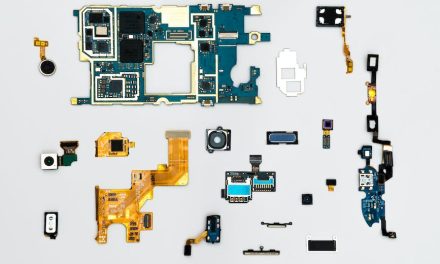Table of Contents
- Introduction
- The Impact of Technology on Performance Reviews
- Best Practices for Conducting Virtual Performance Reviews
- How to Leverage Data Analytics in Performance Evaluations
- The Role of Artificial Intelligence in Modern Performance Reviews
- Strategies for Providing Real-time Feedback in a Digital Environment
- Addressing Bias and Fairness in Performance Assessments
- Incorporating Employee Development Plans into Performance Reviews
- The Future of Performance Management Software
- Case Studies of Companies Successfully Adapting Performance Review Processes
- Q&A
- Conclusion
“Stay ahead of the curve with software that evolves alongside your performance reviews.”
Introduction
Performance reviews are a crucial aspect of employee development and growth within organizations. As technology continues to advance, it is important for companies to assess whether their software systems are keeping up with the evolution of performance reviews. In this article, we will explore the key factors to consider when evaluating the effectiveness of your software in facilitating performance reviews.
The Impact of Technology on Performance Reviews
Performance reviews have long been a staple in the world of human resources, providing a structured way for employers to evaluate their employees’ performance and provide feedback for improvement. However, as technology continues to evolve at a rapid pace, the traditional methods of conducting performance reviews are also changing. With the rise of digital tools and software, many companies are now turning to technology to streamline and enhance the performance review process.
One of the key benefits of using software for performance reviews is the ability to automate many aspects of the process. This can save time and resources for both managers and employees, allowing them to focus on more strategic tasks. For example, software can automate the scheduling of performance reviews, send reminders to both parties, and even generate reports based on the feedback provided. This not only makes the process more efficient but also ensures that it is conducted in a timely manner.
In addition to automation, software can also provide valuable insights and analytics that can help improve the performance review process. By collecting and analyzing data on employee performance, software can identify trends and patterns that may not be immediately apparent to managers. This can help them make more informed decisions about training, development, and promotions, ultimately leading to a more effective and fair performance review process.
Furthermore, software can also facilitate more frequent and ongoing feedback between managers and employees. Instead of waiting for an annual performance review, employees can receive feedback in real-time through digital tools. This can help them address any issues or concerns more quickly and make adjustments to their performance as needed. In turn, managers can also provide more timely feedback and support to their employees, leading to a more engaged and motivated workforce.
However, despite the many benefits of using software for performance reviews, some companies may be hesitant to adopt these tools due to concerns about data security and privacy. With the increasing amount of sensitive information being stored and shared online, it is crucial for companies to ensure that their software is secure and compliant with data protection regulations. This may require investing in secure platforms, implementing strict access controls, and regularly auditing and monitoring the software for any potential vulnerabilities.
Overall, the evolution of technology has had a significant impact on the way performance reviews are conducted in the modern workplace. By leveraging digital tools and software, companies can streamline the process, gain valuable insights, and provide more frequent and meaningful feedback to their employees. However, it is important for companies to carefully consider the implications of using software for performance reviews and take steps to ensure that their data is secure and protected. As technology continues to advance, it is essential for companies to stay ahead of the curve and ensure that their software is keeping up with the evolution of performance reviews.
Best Practices for Conducting Virtual Performance Reviews
Performance reviews have long been a staple in the world of human resources, providing a structured way for managers to evaluate their employees’ performance and provide feedback for improvement. However, as technology continues to evolve, so too must the way in which performance reviews are conducted. With the rise of remote work and virtual teams, many organizations are now turning to virtual performance reviews as a way to keep up with the changing landscape of work.
One of the key challenges of conducting virtual performance reviews is ensuring that the software being used is up to the task. Traditional performance review software may not be equipped to handle the unique needs of virtual teams, such as the ability to easily schedule and conduct remote meetings, provide real-time feedback, and track progress over time. As a result, many organizations are now turning to more advanced performance review software that is specifically designed for virtual teams.
One such software solution is 360-degree feedback software, which allows employees to receive feedback from multiple sources, including peers, managers, and even customers. This can provide a more comprehensive view of an employee’s performance and help to identify areas for improvement. Additionally, 360-degree feedback software often includes features such as goal setting, performance tracking, and development planning, making it a valuable tool for virtual performance reviews.
Another important consideration when choosing performance review software for virtual teams is ease of use. Virtual teams often have unique communication challenges, such as different time zones, language barriers, and cultural differences. As a result, it is important to choose software that is intuitive and user-friendly, so that all team members can easily navigate the platform and participate in the performance review process.
In addition to choosing the right software, there are also best practices that organizations can follow to ensure that their virtual performance reviews are successful. One key best practice is to establish clear goals and expectations for the performance review process. This includes setting specific objectives for each review, outlining the criteria for evaluation, and communicating these expectations to all team members.
Another best practice is to provide training and support for both managers and employees on how to effectively conduct virtual performance reviews. This may include training on how to use the performance review software, how to provide constructive feedback, and how to set and track goals. By providing the necessary training and support, organizations can help to ensure that their virtual performance reviews are productive and meaningful.
Finally, it is important to regularly evaluate and update the performance review process to ensure that it is meeting the needs of virtual teams. This may involve soliciting feedback from employees on their experience with the performance review process, identifying areas for improvement, and making adjustments as needed. By continuously evaluating and updating the performance review process, organizations can ensure that it remains relevant and effective in the ever-changing world of work.
In conclusion, virtual performance reviews are becoming increasingly important in today’s remote work environment. By choosing the right software, following best practices, and regularly evaluating and updating the performance review process, organizations can ensure that their virtual performance reviews are successful and help to drive employee performance and development.
How to Leverage Data Analytics in Performance Evaluations
Performance evaluations have long been a staple in the world of human resources, providing a structured way for employers to assess their employees’ performance and provide feedback for improvement. However, as technology continues to evolve at a rapid pace, the traditional methods of conducting performance reviews are also changing. In today’s digital age, many companies are turning to data analytics to enhance their performance evaluation processes.
Data analytics, the process of analyzing raw data to draw insights and make informed decisions, has become increasingly popular in various industries, including human resources. By leveraging data analytics in performance evaluations, companies can gain valuable insights into their employees’ performance, identify trends, and make data-driven decisions to improve overall performance.
One of the key benefits of using data analytics in performance evaluations is the ability to track and measure performance in real-time. Traditional performance evaluations are often conducted on an annual or bi-annual basis, which can make it challenging to provide timely feedback and address performance issues as they arise. By using data analytics, companies can track performance metrics on an ongoing basis, allowing for more frequent feedback and coaching opportunities.
Additionally, data analytics can help companies identify patterns and trends in employee performance. By analyzing data such as sales numbers, customer satisfaction scores, and productivity metrics, companies can gain a better understanding of what drives employee performance and identify areas for improvement. For example, data analytics may reveal that employees who receive regular feedback and coaching tend to perform better than those who do not, leading to more targeted coaching and development programs.
Furthermore, data analytics can help companies identify high-performing employees and reward them accordingly. By analyzing performance data, companies can identify top performers and recognize their contributions through bonuses, promotions, or other incentives. This not only helps to motivate employees but also ensures that top talent is retained within the organization.
In addition to tracking performance and identifying trends, data analytics can also help companies make more informed decisions about talent management. By analyzing performance data alongside other HR metrics such as employee engagement, turnover rates, and training effectiveness, companies can gain a holistic view of their workforce and make strategic decisions about recruitment, training, and succession planning.
Despite the many benefits of using data analytics in performance evaluations, some companies may be hesitant to adopt this technology due to concerns about data privacy and security. However, by implementing robust data security measures and ensuring compliance with data protection regulations, companies can mitigate these risks and reap the benefits of data analytics in performance evaluations.
In conclusion, data analytics has the potential to revolutionize the way companies conduct performance evaluations. By leveraging data analytics, companies can track performance in real-time, identify trends, and make data-driven decisions to improve overall performance. Additionally, data analytics can help companies identify high-performing employees, make more informed talent management decisions, and ultimately drive business success. As technology continues to evolve, it is essential for companies to ensure that their software is keeping up with the evolution of performance reviews to stay competitive in today’s fast-paced business environment.
The Role of Artificial Intelligence in Modern Performance Reviews

Performance reviews have long been a staple in the world of human resources, providing a structured way for employers to evaluate their employees’ performance and provide feedback for improvement. However, as technology continues to advance at a rapid pace, the traditional methods of conducting performance reviews are evolving as well. One of the key drivers of this evolution is the integration of artificial intelligence (AI) into the performance review process.
AI has the potential to revolutionize the way performance reviews are conducted by providing more accurate and objective assessments of employee performance. By analyzing large amounts of data, AI can identify patterns and trends that may not be immediately apparent to human evaluators. This can help to eliminate bias and ensure that performance reviews are based on objective criteria rather than subjective opinions.
One of the key benefits of using AI in performance reviews is its ability to provide real-time feedback to employees. Traditional performance reviews are often conducted on an annual or semi-annual basis, which can make it difficult for employees to track their progress and make improvements in a timely manner. By using AI-powered tools, employers can provide continuous feedback to employees throughout the year, helping them to stay on track and make adjustments as needed.
Another advantage of using AI in performance reviews is its ability to identify areas for improvement and provide personalized development plans for employees. By analyzing performance data, AI can pinpoint specific areas where employees may be struggling and recommend targeted training or coaching to help them improve. This can help employees to reach their full potential and contribute more effectively to the organization.
In addition to providing more accurate and objective assessments of employee performance, AI can also help to streamline the performance review process. Traditional performance reviews can be time-consuming and labor-intensive, requiring managers to collect and analyze data from multiple sources before providing feedback to employees. By automating this process with AI-powered tools, employers can save time and resources while still providing valuable feedback to their employees.
Despite the many benefits of using AI in performance reviews, there are also some potential drawbacks to consider. One concern is the potential for AI to perpetuate bias in the performance review process. If the algorithms used to analyze performance data are not properly calibrated, they may inadvertently reinforce existing biases or introduce new ones. Employers must be vigilant in monitoring and adjusting their AI systems to ensure that they are providing fair and accurate assessments of employee performance.
Another potential drawback of using AI in performance reviews is the risk of data privacy and security breaches. As AI systems collect and analyze large amounts of data, there is always the potential for sensitive information to be compromised. Employers must take steps to protect employee data and ensure that it is being used in a responsible and ethical manner.
In conclusion, the integration of AI into the performance review process has the potential to revolutionize the way employers evaluate their employees’ performance. By providing more accurate and objective assessments, real-time feedback, and personalized development plans, AI can help employees to reach their full potential and contribute more effectively to the organization. However, employers must also be mindful of the potential drawbacks of using AI in performance reviews, including the risk of bias and data privacy concerns. By carefully monitoring and adjusting their AI systems, employers can harness the power of AI to improve the performance review process and drive better outcomes for their employees.
Strategies for Providing Real-time Feedback in a Digital Environment
Performance reviews have long been a staple in the world of human resources, providing employees with valuable feedback on their work and helping organizations identify areas for improvement. However, as technology continues to evolve at a rapid pace, many companies are finding that their traditional performance review processes are no longer sufficient. In today’s digital environment, real-time feedback has become increasingly important, and organizations must adapt their software systems to keep up with this shift.
One of the key challenges facing organizations in the digital age is the need for more frequent and timely feedback. Traditional performance reviews typically occur on an annual or semi-annual basis, which can be too infrequent to provide employees with the guidance they need to improve their performance in real-time. In a fast-paced business environment, employees need feedback on a more regular basis to stay on track and make adjustments as needed.
To address this challenge, many organizations are turning to software solutions that enable real-time feedback. These systems allow managers and employees to provide feedback on an ongoing basis, rather than waiting for a formal review period. This can help to keep employees engaged and motivated, as they receive timely recognition for their achievements and guidance on areas for improvement.
In addition to providing more frequent feedback, real-time performance review software can also help organizations to track and analyze performance data more effectively. By collecting data on an ongoing basis, organizations can identify trends and patterns in employee performance, allowing them to make more informed decisions about training, development, and promotions. This can help to ensure that employees are receiving the support they need to succeed and that the organization is making the most of its talent.
Another benefit of real-time performance review software is its ability to facilitate communication between managers and employees. In a digital environment, where many employees work remotely or in different locations, it can be challenging to provide feedback in a timely and effective manner. Performance review software can help to bridge this gap by providing a centralized platform for communication and feedback, making it easier for managers and employees to stay connected and aligned.
Of course, implementing real-time performance review software is not without its challenges. Organizations must ensure that their software systems are user-friendly, secure, and compatible with their existing technology infrastructure. They must also train managers and employees on how to use the software effectively, so that they can make the most of its features and capabilities.
Despite these challenges, the benefits of real-time performance review software are clear. By providing more frequent feedback, tracking performance data more effectively, and facilitating communication between managers and employees, organizations can create a more dynamic and responsive feedback culture. This can help to improve employee engagement, productivity, and retention, ultimately leading to better business results.
In conclusion, the evolution of performance reviews in the digital age requires organizations to adapt their software systems to keep up with the demand for real-time feedback. By investing in real-time performance review software, organizations can provide employees with the guidance they need to succeed, track performance data more effectively, and facilitate communication between managers and employees. While implementing real-time performance review software may present challenges, the benefits far outweigh the costs, making it a worthwhile investment for organizations looking to stay ahead in today’s fast-paced business environment.
Addressing Bias and Fairness in Performance Assessments
Performance reviews are a critical component of any organization’s talent management strategy. They provide valuable feedback to employees, help identify areas for improvement, and inform decisions about promotions, raises, and other career development opportunities. However, traditional performance review processes have come under scrutiny in recent years for their potential to perpetuate bias and unfairness.
One of the key challenges with traditional performance reviews is the subjective nature of the evaluation process. Managers are often asked to rate employees based on their own perceptions and biases, which can lead to inconsistencies and inaccuracies in the assessment. Research has shown that unconscious biases, such as gender, race, or age, can influence how managers evaluate employees, leading to disparities in performance ratings and opportunities for advancement.
To address these issues, many organizations are turning to technology to help improve the fairness and objectivity of performance assessments. Performance management software can provide a standardized framework for evaluating employees, ensuring that all employees are assessed based on the same criteria and eliminating the potential for bias in the evaluation process.
One of the key benefits of performance management software is its ability to track and analyze performance data over time. By collecting and analyzing data on employee performance, organizations can identify patterns and trends that may indicate bias or unfairness in the evaluation process. For example, if certain groups of employees consistently receive lower ratings than others, it may be a sign that bias is at play in the assessment process.
Performance management software can also help organizations ensure that performance assessments are based on objective criteria rather than subjective opinions. By defining clear performance metrics and goals for employees, organizations can ensure that evaluations are based on measurable outcomes rather than personal biases. This can help create a more transparent and fair evaluation process for all employees.
In addition to improving the objectivity of performance assessments, performance management software can also help organizations address bias and fairness in other aspects of the performance review process. For example, some software platforms offer tools for conducting 360-degree feedback assessments, which allow employees to receive feedback from multiple sources, including peers, subordinates, and supervisors. This can help provide a more comprehensive and balanced view of an employee’s performance, reducing the potential for bias in the evaluation process.
Overall, performance management software can play a valuable role in helping organizations address bias and fairness in performance assessments. By providing a standardized framework for evaluating employees, tracking performance data over time, and promoting objective criteria for assessment, software platforms can help create a more transparent and equitable evaluation process for all employees. As organizations continue to evolve their performance review processes, it is essential to ensure that their software tools are keeping pace with these changes to promote fairness and objectivity in performance assessments.
Incorporating Employee Development Plans into Performance Reviews
Performance reviews have long been a staple in the world of human resources, providing a structured way for managers to evaluate their employees’ performance and provide feedback. However, as the workplace continues to evolve, so too must the way in which performance reviews are conducted. One area that is gaining increasing attention is the incorporation of employee development plans into performance reviews.
Employee development plans are a crucial tool for fostering the growth and advancement of employees within an organization. By outlining specific goals and objectives for each employee, development plans help to ensure that individuals are continuously learning and improving their skills. This, in turn, can lead to increased job satisfaction, higher levels of engagement, and ultimately, improved performance.
Incorporating employee development plans into performance reviews can be a powerful way to align individual goals with the overall objectives of the organization. By discussing an employee’s progress towards their development goals during a performance review, managers can provide targeted feedback and support to help employees reach their full potential. This can also help to ensure that employees are working towards goals that are in line with the strategic direction of the organization.
One key benefit of incorporating employee development plans into performance reviews is that it can help to create a culture of continuous learning within an organization. By regularly reviewing and updating development plans, employees are encouraged to take ownership of their own growth and development. This can lead to increased motivation and engagement, as employees see the direct impact of their efforts on their career progression.
Another advantage of incorporating employee development plans into performance reviews is that it can help to identify and address any skills gaps within the organization. By regularly reviewing employees’ progress towards their development goals, managers can quickly identify areas where additional training or support may be needed. This can help to ensure that employees have the skills and knowledge necessary to succeed in their roles, ultimately benefiting both the individual and the organization as a whole.
In order to effectively incorporate employee development plans into performance reviews, organizations must ensure that they have the right tools and processes in place. This may include investing in performance management software that allows for the tracking and monitoring of development goals, as well as providing training and support to managers on how to effectively coach and mentor their employees.
As the workplace continues to evolve, it is essential that organizations adapt their performance review processes to keep pace with these changes. By incorporating employee development plans into performance reviews, organizations can create a culture of continuous learning, align individual goals with organizational objectives, and identify and address skills gaps within the organization. Ultimately, this can lead to increased employee engagement, improved performance, and a more motivated and skilled workforce.
The Future of Performance Management Software
Performance reviews have long been a staple in the world of human resources, providing a structured way for managers to evaluate their employees’ performance and provide feedback for improvement. However, as the workplace continues to evolve, so too must the tools and technologies that support performance management. In today’s fast-paced and dynamic work environment, traditional performance review processes are becoming outdated and ineffective. This has led to a growing demand for more innovative and efficient solutions, such as performance management software.
Performance management software is designed to streamline the performance review process, making it easier for managers to track employee progress, set goals, and provide feedback in a timely manner. These tools can also help organizations collect and analyze data on employee performance, allowing them to make more informed decisions about talent development and succession planning. With the right software in place, companies can improve employee engagement, productivity, and retention rates.
One of the key benefits of performance management software is its ability to facilitate ongoing feedback and communication between managers and employees. Instead of waiting for an annual performance review, employees can receive real-time feedback on their performance, allowing them to make adjustments and improvements as needed. This continuous feedback loop can help employees stay motivated and engaged, leading to better overall performance and job satisfaction.
Another advantage of performance management software is its ability to track and measure employee performance more accurately. By collecting data on key performance indicators, such as sales numbers, customer satisfaction ratings, or project completion rates, managers can gain a clearer picture of each employee’s strengths and areas for improvement. This data-driven approach to performance management can help organizations identify top performers, as well as employees who may need additional support or training.
In addition to improving the performance review process, performance management software can also help organizations align individual goals with overall business objectives. By setting clear and measurable goals for each employee, managers can ensure that everyone is working towards the same strategic priorities. This alignment can lead to increased productivity, collaboration, and innovation within the organization.
As the demand for performance management software continues to grow, so too does the need for more advanced and sophisticated solutions. Today’s leading software providers are incorporating artificial intelligence and machine learning capabilities into their platforms, allowing for more personalized and predictive performance management. These advanced technologies can help organizations identify trends, patterns, and opportunities for improvement that may have otherwise gone unnoticed.
In conclusion, the evolution of performance reviews is driving the demand for more innovative and efficient solutions, such as performance management software. By leveraging these tools, organizations can streamline the performance review process, facilitate ongoing feedback and communication, track and measure employee performance more accurately, and align individual goals with overall business objectives. As the workplace continues to evolve, it is essential for companies to invest in the right software to keep up with the changing landscape of performance management.
Case Studies of Companies Successfully Adapting Performance Review Processes
Performance reviews have long been a staple in the world of human resources, providing a structured way for employers to evaluate their employees’ performance and provide feedback for improvement. However, as the workplace continues to evolve, so too must the way in which performance reviews are conducted. Many companies are finding that traditional performance review processes are no longer effective in today’s fast-paced, technology-driven world. In order to keep up with the changing landscape of work, companies are turning to innovative software solutions to streamline and modernize their performance review processes.
One such company that has successfully adapted its performance review process is XYZ Inc. XYZ Inc. is a global technology company that prides itself on its innovative approach to business. In order to stay ahead of the curve, XYZ Inc. recognized the need to revamp its performance review process to better align with its fast-paced, tech-savvy workforce. The company implemented a new software solution that allowed employees to track their goals, receive real-time feedback, and engage in ongoing performance discussions with their managers.
The results were impressive. Employees reported feeling more engaged and motivated, as they were able to see their progress in real-time and receive timely feedback on their performance. Managers also found the new software solution to be incredibly helpful, as it allowed them to easily track employee progress, identify areas for improvement, and provide meaningful feedback. Overall, the new performance review process at XYZ Inc. was a resounding success, leading to increased employee satisfaction and improved performance across the board.
Another company that has successfully adapted its performance review process is ABC Corp. ABC Corp. is a leading financial services firm that has a strong focus on employee development and growth. In order to better support its employees and foster a culture of continuous improvement, ABC Corp. implemented a new software solution that allowed for more frequent and meaningful performance discussions.
The new software solution at ABC Corp. enabled employees to set goals, track their progress, and receive feedback from their managers on a regular basis. This shift towards ongoing performance discussions helped to create a more collaborative and transparent work environment, where employees felt supported and valued. Managers also found the new software solution to be incredibly beneficial, as it allowed them to easily track employee progress, identify areas for improvement, and provide timely feedback.
The results at ABC Corp. were overwhelmingly positive. Employees reported feeling more engaged and motivated, as they were able to see their progress and receive feedback in real-time. Managers also noted an improvement in employee performance, as the new software solution helped to facilitate more meaningful performance discussions and identify areas for growth. Overall, the new performance review process at ABC Corp. was a game-changer, leading to increased employee satisfaction and improved performance outcomes.
In conclusion, it is clear that traditional performance review processes are no longer sufficient in today’s fast-paced, technology-driven world. Companies must adapt and evolve their performance review processes in order to keep up with the changing landscape of work. By implementing innovative software solutions that enable more frequent and meaningful performance discussions, companies can create a more engaged and motivated workforce, leading to improved performance outcomes across the board. XYZ Inc. and ABC Corp. are just two examples of companies that have successfully adapted their performance review processes, and many more are sure to follow suit in the years to come.
Q&A
1. Are traditional annual performance reviews still effective?
No.
2. What are some drawbacks of traditional annual performance reviews?
Lack of real-time feedback, focus on past performance, demotivating for employees.
3. How can software help improve performance reviews?
By providing real-time feedback, tracking progress, and facilitating ongoing communication.
4. What are some key features to look for in performance review software?
Customizable templates, goal setting and tracking, 360-degree feedback, analytics and reporting.
5. How can software help managers and employees have more meaningful performance conversations?
By providing data-driven insights, facilitating goal setting and tracking, and encouraging ongoing feedback.
6. How can software help address bias in performance reviews?
By providing standardized evaluation criteria, anonymous feedback options, and tracking performance data over time.
7. How can software help streamline the performance review process?
By automating reminders, scheduling reviews, and consolidating feedback in one platform.
8. How can software help align individual performance with organizational goals?
By linking individual goals to company objectives, tracking progress towards key metrics, and facilitating alignment conversations.
9. How can software help organizations adapt to changing performance management trends?
By providing flexibility to customize review processes, incorporating new feedback methods, and adapting to evolving best practices.
Conclusion
In conclusion, it is important for organizations to regularly assess and update their software to ensure it is keeping up with the evolution of performance reviews. Failure to do so can result in inefficiencies, inaccuracies, and missed opportunities for improvement in the performance management process. By investing in modern, user-friendly software that aligns with current best practices, organizations can better support their employees and drive overall performance and success.





